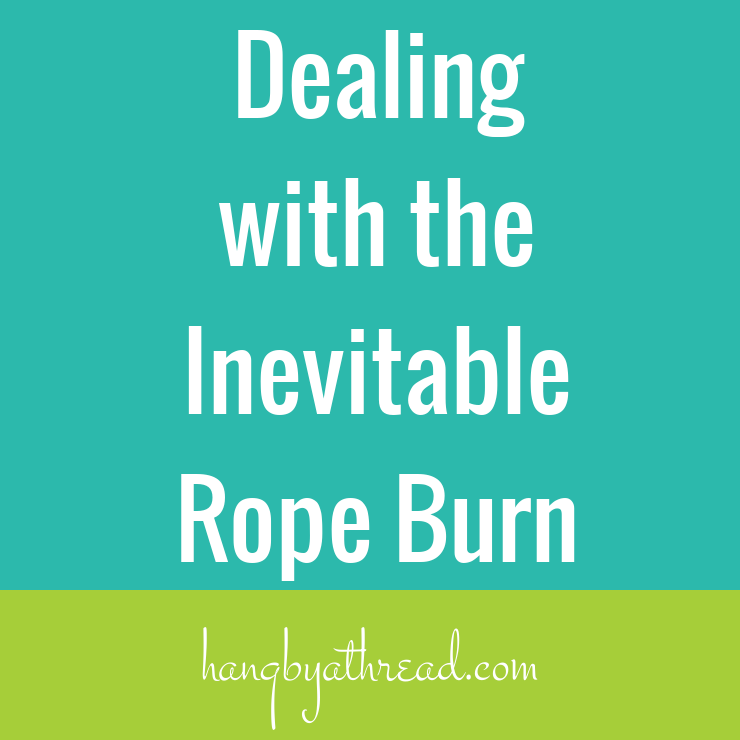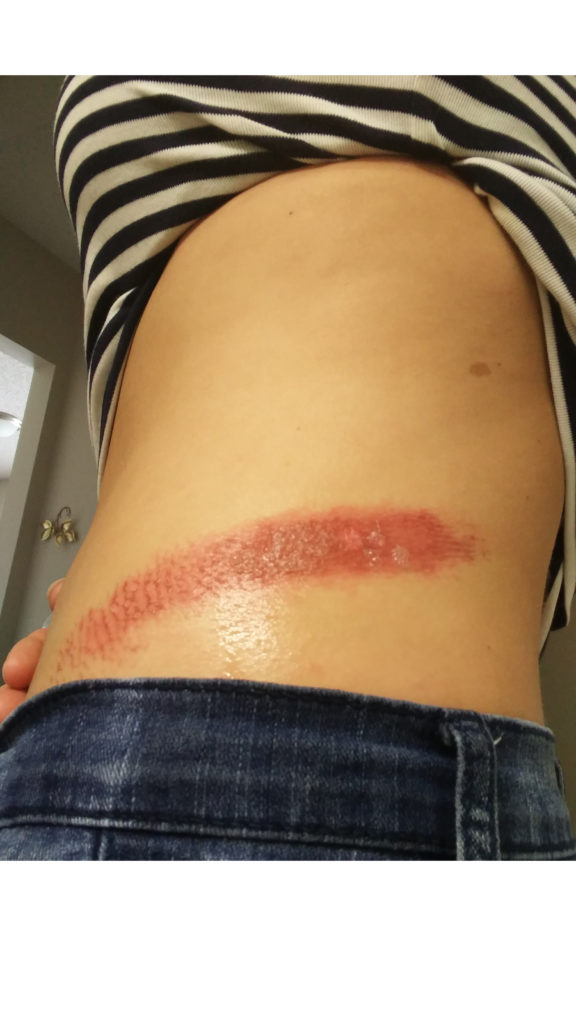This summer, during a group corde lisse routine, our midriff baring costumes came together with an inverted descent and earned me the biggest rope burn I’ve ever had. On stage. Night one.
It’s going to happen. Rope burns in this business are just part of the package. Sooner or later, you’ll sacrifice some of your skin for the hobby you love. So let’s get you as ready as possible for it.
First up: Prevention
It is going to happen, but let’s try to minimize how many burns you get. Cover up! You know what you need on your apparatus; make sure your clothes are covering what you need covered. I used to prefer for my legs to be uncovered because I could grip better with my knees. Until one humid day (all the summer days are humid in KC) I took some skin off my legs just sliding down to my knees on the trapeze.
You’re likely to be able to get away with exposing your stomach on the trapeze or lyra, but it can be less fun on corde lisse or silks.
If it’s hot out, you might feel better in shorts, just make sure to wear some thick tights underneath. And a word of caution about fishnets: they probably aren’t enough. One very fun performance we did had us decked out in rhinestoned bras and black fishnet tights. But the next morning, I and my fellow silk performer had fishnet shaped scabs on our inner thighs. It looked like we had grown scales. Never again. (You can still wear them, just maybe wear skin colored tights underneath.)
Wearing a longer shirt is helpful too. It covers more anyway, but you can also tuck it in for wheel-downs or s-wraps in the silks or on the rope.
What to Do When Rope Burn Happens (because it will happen)
If you’re still training or are in the middle of class, wrap it up to prevent it from getting dirty or getting worse. Always keep some gauze and athletic tape on hand just in case. This will also provide a little bit of a cushion so you can keep training, because burns hurt.
When you get home, clean the wound really well. It’s going to hurt like crazy, but clean it as best and as gently as you can in the shower. (Shower bonus: if you didn’t know you had a burn, you will definitely find out in the shower. Hot water on raw skin hurts!)
I also use hydrogen peroxide at first, just like when I was little and scraped my knee. But I have a friend who insists that you shouldn’t use it much, as it can destroy the new skin forming. I’m not sure on that, but I do think that when the burn is still new it’s a good way to get whatever sweat and rosin and glitter our of there.
Use Neosporin.
I can’t believe I skipped this for so long. It’s a little annoying because you’ll be a little greasy, but it heals so much faster, and so much better.
Wrap It Up
I use gauze and tape over Neosporin for this, especially while I’m sleeping to keep the wound clean. Wrapping it also keeps the ointment from getting all over everything.
A word of caution here: my burn was bad enough that for the first few days, it would start healing into the dressing. No fun. No fun at all.
Air It Out
Okay, I know I said to cover it up, but it’s also important to let the burn air out too. Remember when you were little and put a bandaid on your finger, and the skin would get all shriveled? Not good. You need to change the dressing on it decently often, so when you can, put some Neosporin on it and just let it breathe. When I had my bad side burn, some days at home I’d tuck my tshirt up into my bra to let it air out.
It still might scar
But you earned that scar! Still, it’s good to minimize them. And if you take care of your battle wound, it will heal up so much better.









